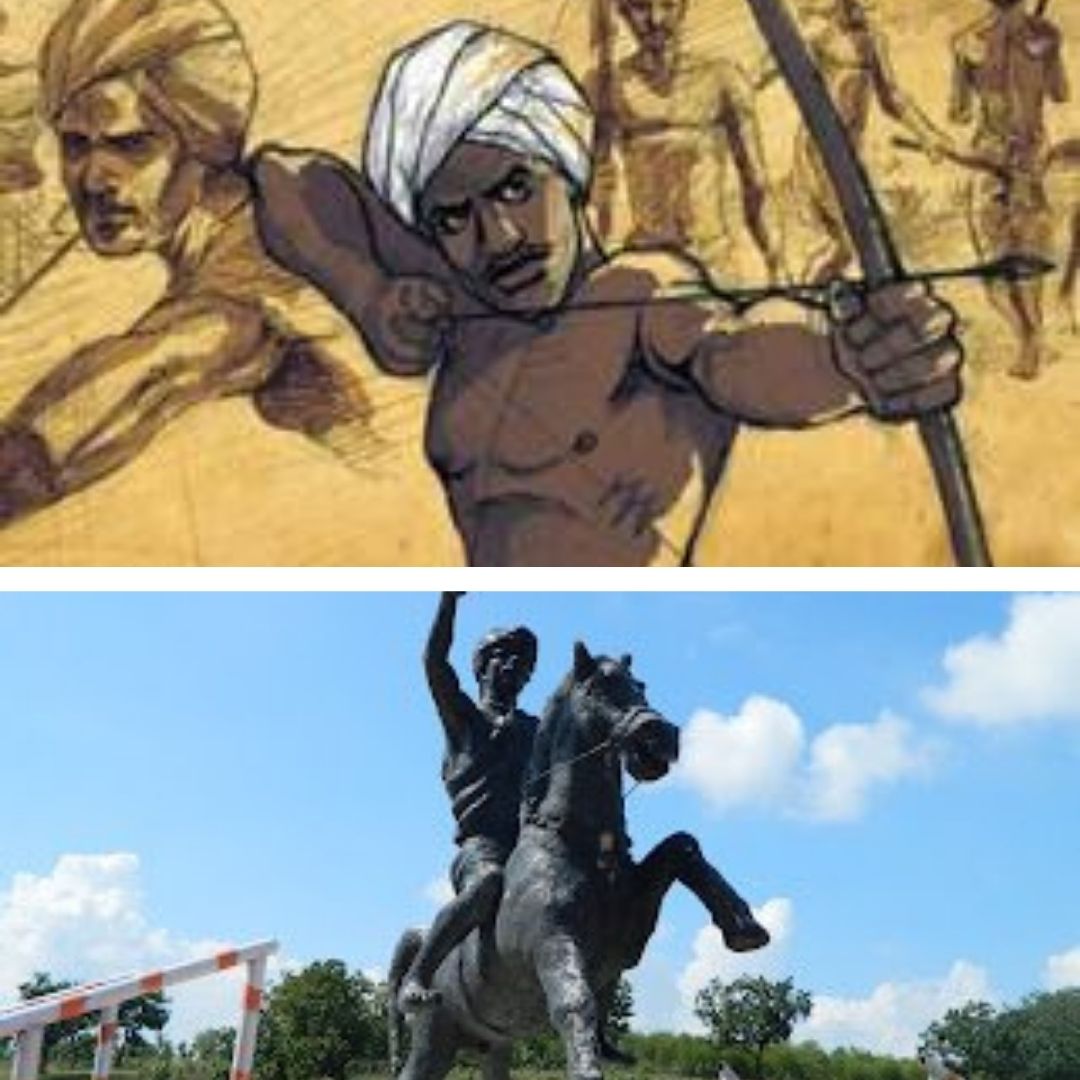
Image Credits: Jivani Hindi, Twitter/ Tribal Army
Remembering Budhu Bhagat! Tribal Hero Who Stood Against Forced Labour, Economic Exploitation By Britishers
Writer: Tashafi Nazir
For most people, journalism sounds hectic and chaotic. For her, it's a passion she has been chasing for years. With an extensive media background, Tashafi believes in putting efforts on presenting a simple incident in the most interesting way.
India, 17 Feb 2022 11:58 AM GMT
Editor : Snehadri Sarkar |
While he is a massive sports fanatic, his interest also lies in mainstream news and nitpicking trending and less talked about everyday issues.
Creatives : Tashafi Nazir
For most people, journalism sounds hectic and chaotic. For her, it's a passion she has been chasing for years. With an extensive media background, Tashafi believes in putting efforts on presenting a simple incident in the most interesting way.
Since his childhood, Bhagat used to practice swordsmanship and archery. Due to his immense hatred against Britishers and their authority over his territories, he always wanted to involve himself in an armed struggle against their regime.
While India was fighting for its freedom struggle, many of the protests against the British government were led by tribal people. Their fight for their land and people was more commendable as the country witnessed their struggle turning into a revolution by using traditional equipment like swords and bows. Among those warriors was one revolutionary, Budhu Bhagat.
Born on February 17, 1792, Budhu Bhagat belonged to an Oraon family of Silagai village of present-day Jharkhand. Since his childhood, he used to practice swordsmanship and archery. Due to his immense hatred against Britishers and their authority over his territories, Bhagat always wanted to involve himself in an armed struggle against their regime, according to a local publication.
When the Britishers, along with the local 'zamindars' (landlords) started exploiting the lives of tribal people, the Jharkhand native decided to exhibit an armed insurrection against the invaders.
Kol Rebellion
In 1831, the Kol tribespeople of Chhota Nagpur, who were upset overexploitation by agents of the East India Company (EIC), rose in revolt. The rebel kols, under the leadership of Buddhu Bhagat, Joa Bhagat, Madara Mahato and others, grew restive over the increasing encroachment on tribal territories by the non-tribals. The new non-tribal landlords resorted to forced labour and fines and confiscated their cattle. The Kol insurrection began when the farm of two Sikh contractors was plundered and burnt.
In 1832, Budhu Bhagat led the Larka rebellion and motivated the tribal people to fight against the oppressive rule of the British and landlords. Bhagat and his followers fought with primitive weapons like bows, arrows and axes.
The characteristic feature of the Kol rebellion was that the Kol tribe members did not fight alone. Other tribespeople like the Hos, Oraons, and Mundas joined with them. The Kol did not hesitate to fight with traditional weapons against the Presidency armies, who fought with the latest instruments of warfare.
Seeing the organisational ability of Budhu Bhagat, people used to consider him as an incarnation of the deity. The freedom fighter had a significant influence on the people of Ranchi and the surrounding areas of Chhota Nagpur, who were ready to sacrifice their lives for the cause of his appeal. He taught the tribals to fight for their rights, trained them in guerrilla warfare, and defeated the English soldiers several times, taking advantage of the dense forests and inaccessible hills. The hit-and-run tactics of Budhu soldiers caused heavy casualties among the British soldiers, who were unaware of the terrain of the region.
Bhagat became a big threat to the British government, who announced a reward of one thousand rupees on his head, which was considered a huge amount in those days.
To capture Budhu Bhagat and his companions, the Britishers surrounded Silagai village on February 13, 1832, and opened fire. Fighting with just swords and axe against the advanced guns and weapons of the British army, Bhagat and his companions fought till their last breath. During the encounter, Bhagat was hit by a bullet and died while fighting for his nation.
Also Read: Outrage Over 'Godse A Role Model' Competition At Gujarat School, Official Suspended
 All section
All section














